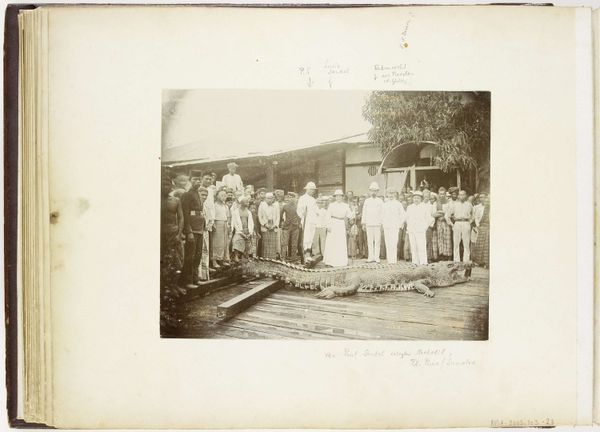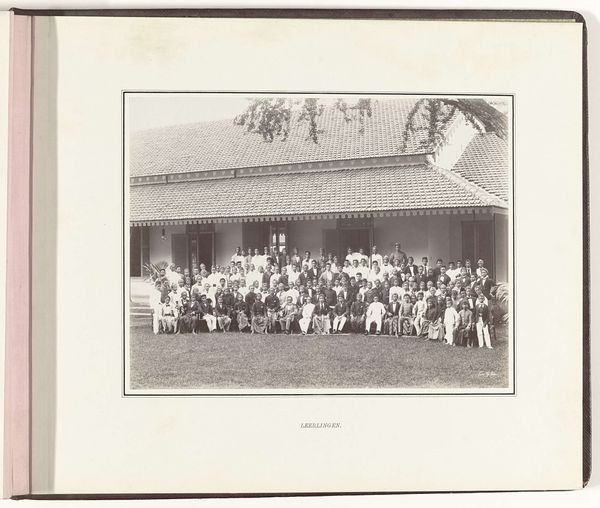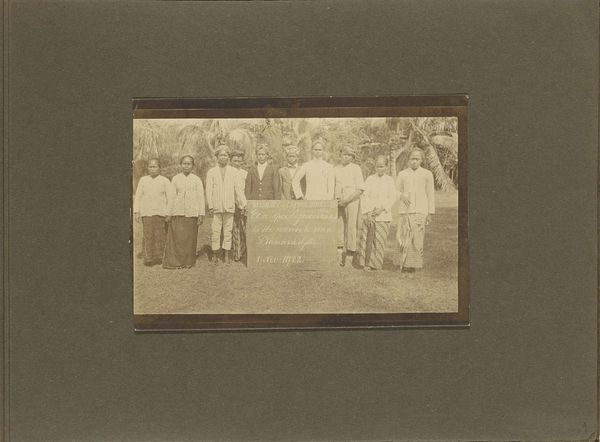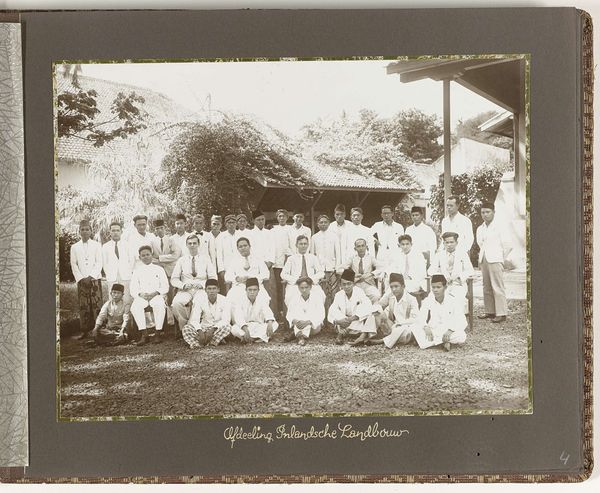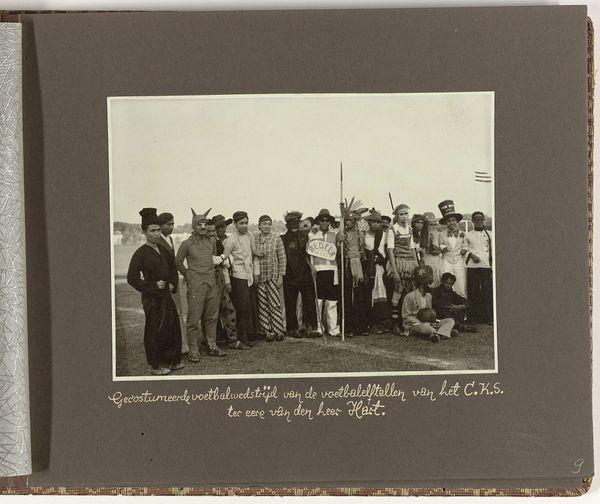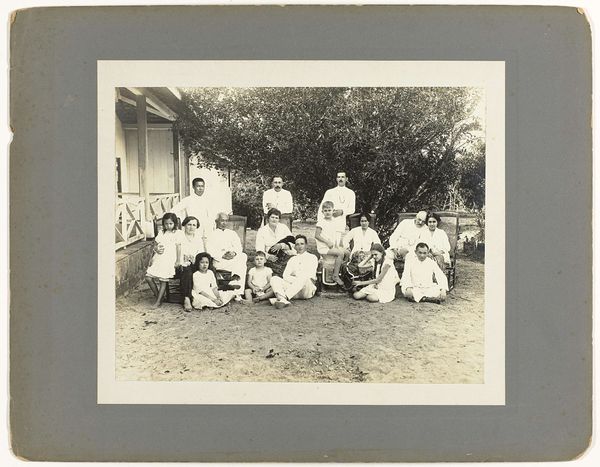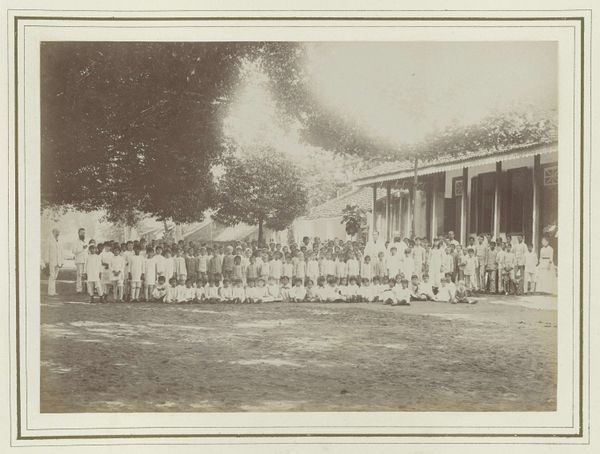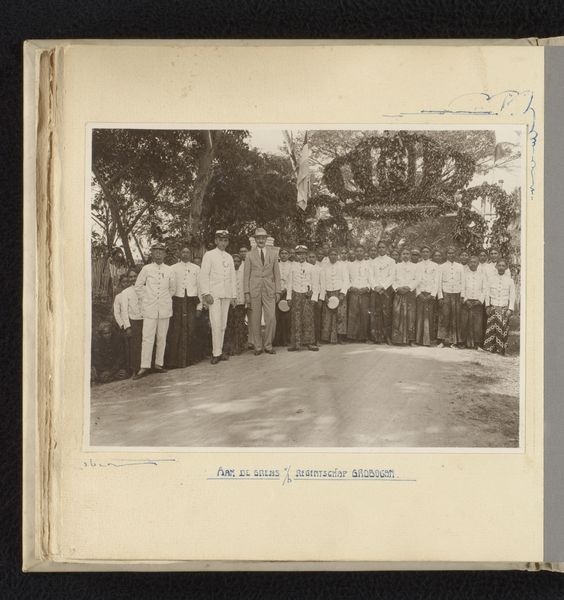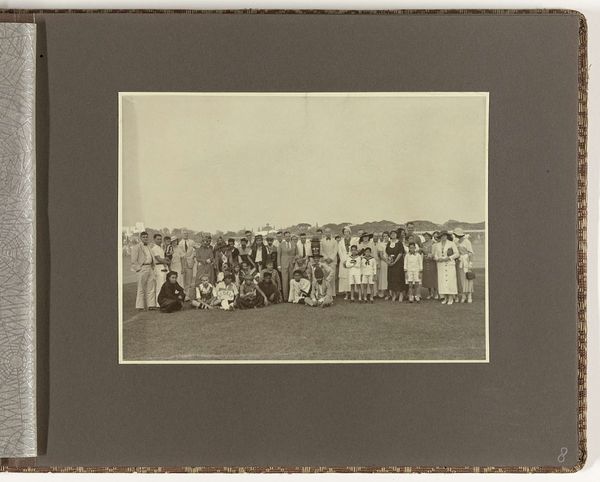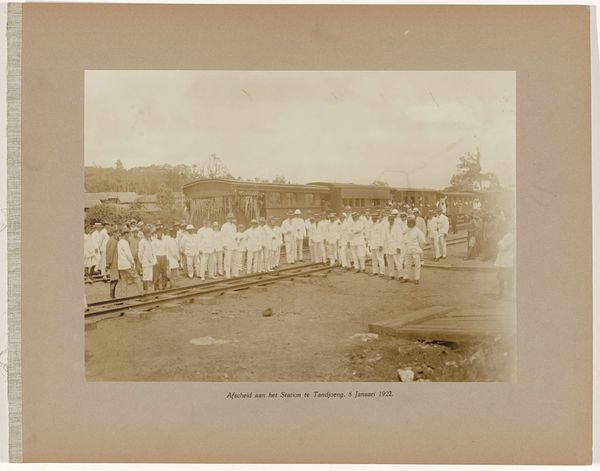
print, photography
#
portrait
# print
#
asian-art
#
photography
#
group-portraits
#
realism
Dimensions: height 143 mm, width 225 mm, height 223 mm, width 316 mm
Copyright: Rijks Museum: Open Domain
Editor: Here we have a photograph from 1905 by Busenbender & Co. titled "Groepsportret van voetballers en supporters van Oliveo, Batavia"—a group portrait of the Oliveo football team and their fans in what was then Batavia. It feels like a document, a record of a specific moment, but the composition is quite formal. What do you see in this piece, especially considering its historical context? Curator: What strikes me immediately is the visual representation of colonialism embedded within this seemingly straightforward group portrait. We have a predominantly European team, likely representing Dutch colonial power, amidst the local Indonesian population. Notice the stark contrast in dress and posture; who stands, who sits, and how this mirrors the established social hierarchy of the time. Do you think this arrangement was accidental? Editor: I suppose not, it feels deliberate. The Europeans are at the center, and the local population seems positioned around them, almost like a frame. So the photograph is really about power? Curator: Precisely. Consider Batavia's history; it was the capital of the Dutch East Indies. This image is a carefully constructed narrative of dominance, presented under the guise of a simple team photograph. Think about the gazes too; some are direct, confronting, but many avert their eyes. This image, then, becomes a powerful tool for understanding the complexities of colonial identity and representation. What does it make you think about in contemporary terms? Editor: I am seeing now how it reveals so much about the society it was created in, and it does feel relevant. Images still hold immense power today in shaping narratives of identity and power dynamics. Curator: Indeed. Analyzing historical images such as this group portrait allows us to critically examine how colonial legacies continue to influence our understanding of identity, race, and representation in visual culture. Editor: I see that now, I wouldn't have thought a team picture could hold so much historical and cultural information. Thanks for your help!
Comments
No comments
Be the first to comment and join the conversation on the ultimate creative platform.
